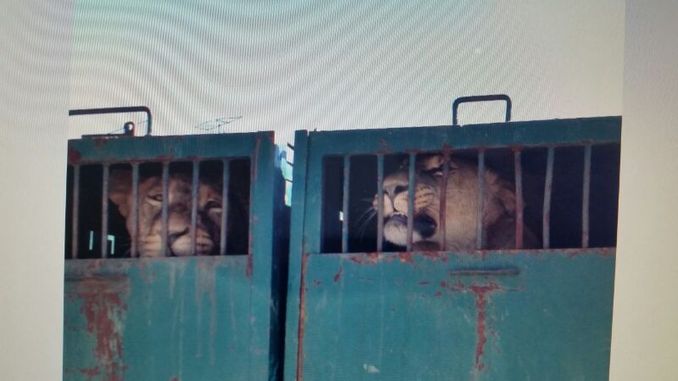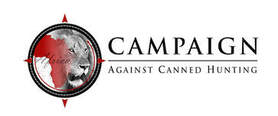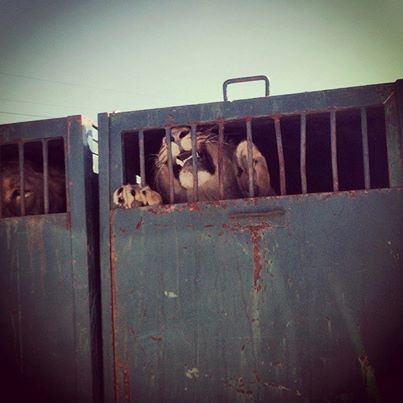
By
Chris Mercer
Campaign Against Canned Hunting Inc
Comment Tracking Number: 1jz-8gtl-q4ze
Inconvenient Truths dismissed as ‘anecdotal.’
In its Proposed Rule document that was published in Federal Register Vol. 79 No. 209 on 29 October 2014 (RIN 1018–BA29), further to 50 CFR Part 17, under Docket No. FWS–R9–ES–2012–0025; 450 003 0115, the U.S. Fish and Wildlife Service ('the Service') advises that:
"Lion products, such as the trade in lion bone, seem to be primarily by-products of trophy hunting; hunters are primarily interested in the trophy and skin and, therefore, the bones and other parts are sold separately (CITES 2014a, p. 10). However, since the reports of these types of activities are primarily
anecdotal in nature, based on the best available scientific and commercial information, we find that the sale of these by-products does not currently pose a threat to the species. Further, without a significant shift in the market, it is not likely to become a threat in the foreseeable future".
With respect, this passage shows the limitations of the parameters placed upon the Service and / or the exercise in response to the petition dated 1 March 2011 requesting that the African lion be listed as endangered under the Endangered Species Act 1973 ('the Act').
Actually the lion bone trade shows every sign of having the potential to cause regional extinction of BOTH wild lions and Tigers in Asia. To dismiss it so lightly is to misunderstand the threat.
Poaching in Botswana.
How can you possibly believe that there is only ‘anecdotal’ evidence as yet that the trade in captive bred lion bones is having a deleterious effect on wild lion populations?
Do you ignore the confessions of whistle blowers whose statements have been published in the Botswana Press about how they chase wild prides to exhaustion in the Kalahari, shoot the adults and capture the cubs to smuggle them in to SA lion farms, as ‘merely anecdotal’?
Lion bones killing wild tigers in Asia.
Have you even considered how Lion farming in SA and the lion bone trade poses a huge risk to the continued existence of wild tigers (Panthera tigris) who have been listed as Endangered under the Act since the 1970s. Everything is connected.
On 13 November 2013 the U.S. Secretary of State issued a $1,000,000 reward for information leading to the dismantling of the wildlife trafficking Xaysavang Network.
The U.S. State Department believes the leader of the Xaysavang Network is a Lao national by the name of Vixay Keosavang ( http://www.state.gov/j/inl/tocrewards/c60273.htm ). In the summer of 2011 the South African Minister of Water and Environmental Affairs provided the names of all of the South African exporters and Laotian importers of hundreds of lion 'carcasses' that had been exported from South Africa to Lao PDR during 2009 and 2010. Vixay Keosovang was the importer who the Minister named most often, as evidenced at:
https://www.environment.gov.za/sites/default/files/parliamentary_updates/question1734.pdf
In late 2013 Vixay Keosavang admitted in a conversation that was caught on film that he imports approximately 10 tonnes of South African captive bred lion skeletons and bones every year. He confirmed that he then sells them on to three clients in Viet Nam's Ha Tinh province who boil them down and pass them off to unsuspecting consumers as tiger in the tiger bone 'cake' products that are now so prevalent throughout that region. At 18kg per skeleton maximum that equals an injection into the supply side of the illegal tiger trade in Asia of approximately 555 big cats per annum. Basic economics means that this fuels and stimulates demand for further tiger products for which the prevailing view is that consumers prefer wild tiger products. This is not anecdotal, it is evidence that has been passed to the U.S. Department of State, INTERPOL and the CITES Standing Committee, as evidenced at:
http://wcclas.org/images/forms/RHargreavesCites0714.pdf
It is evident that USFW places far too much reliance on third world conservation structures (read ‘rangeland states’ in hunting parlance.)
Have you any idea how incompetent, corrupt and dysfunctional many African conservation authorities are? Add to those inherent disabilities (euphemistically termed ‘lack of capacity) the fact that regulatory capture has taken place and the hunting industry now controls conservation policies in rangeland states like SA and Tanzania.
Talk to Dr Craig Packer at Minnesota University and ask him how quickly he was deported from Tanzania for writing in a research paper that lion hunting was adversely impacting wild lion prides in Tanzania.
Look at how tightly the hunting industry controls conservation structures in South Africa:
http://www.cannedlion.org/blog/invade-and-occupy
When our efforts to get the import of lion trophies in to Australia seemed to be favourably considered by the Australian government, the South African government intervened at diplomatic level to protect the canned lion hunting industry.
We know how difficult the hunting industry makes life for USFW. We know how the hunting fraternity lobbies and litigates ferociously to make sure that your policies and practices do not interfere with their lethal designs on helpless animals.
The point is this: USFW, like all conservation structures in the world, is subject to a continuous stream of misinformation by hunting propagandists, and special pleading by vested interests muddies the waters and confuses the issues. Actually, you ought to be raising the status of the African lion to endangered AND specifically banning the import of lion trophies in to USA. But SCI will never allow you to be real conservationists.
It is tragic really. If USFW cannot stand up to the hunting thugs, then who can? Certainly not the weak and vulnerable African conservation services. You call yourselves a conservation service. We do not see you providing any protection whatsoever for the African lion. Is it because you are under SCI's thumb?
In the circumstances, the Service is requested to finalise its proposed listing and rule and thereafter strongly encouraged not to take CITES tags and export documentation at face value when presented with applications for threatened species import permits for captive bred lions from South Africa.

